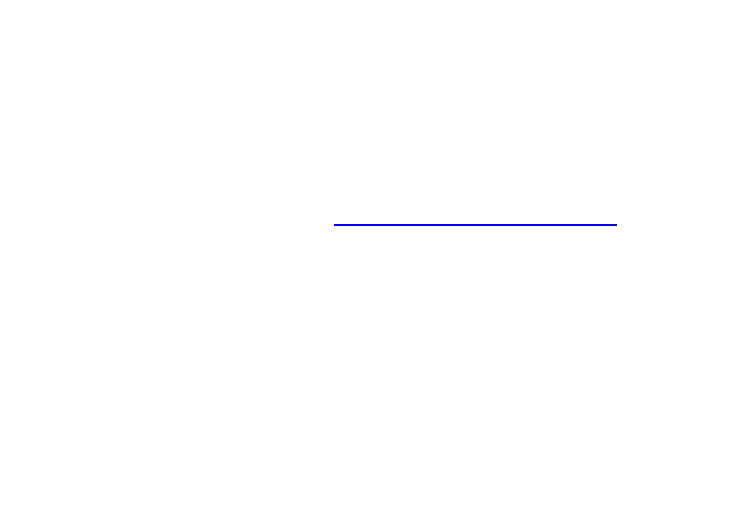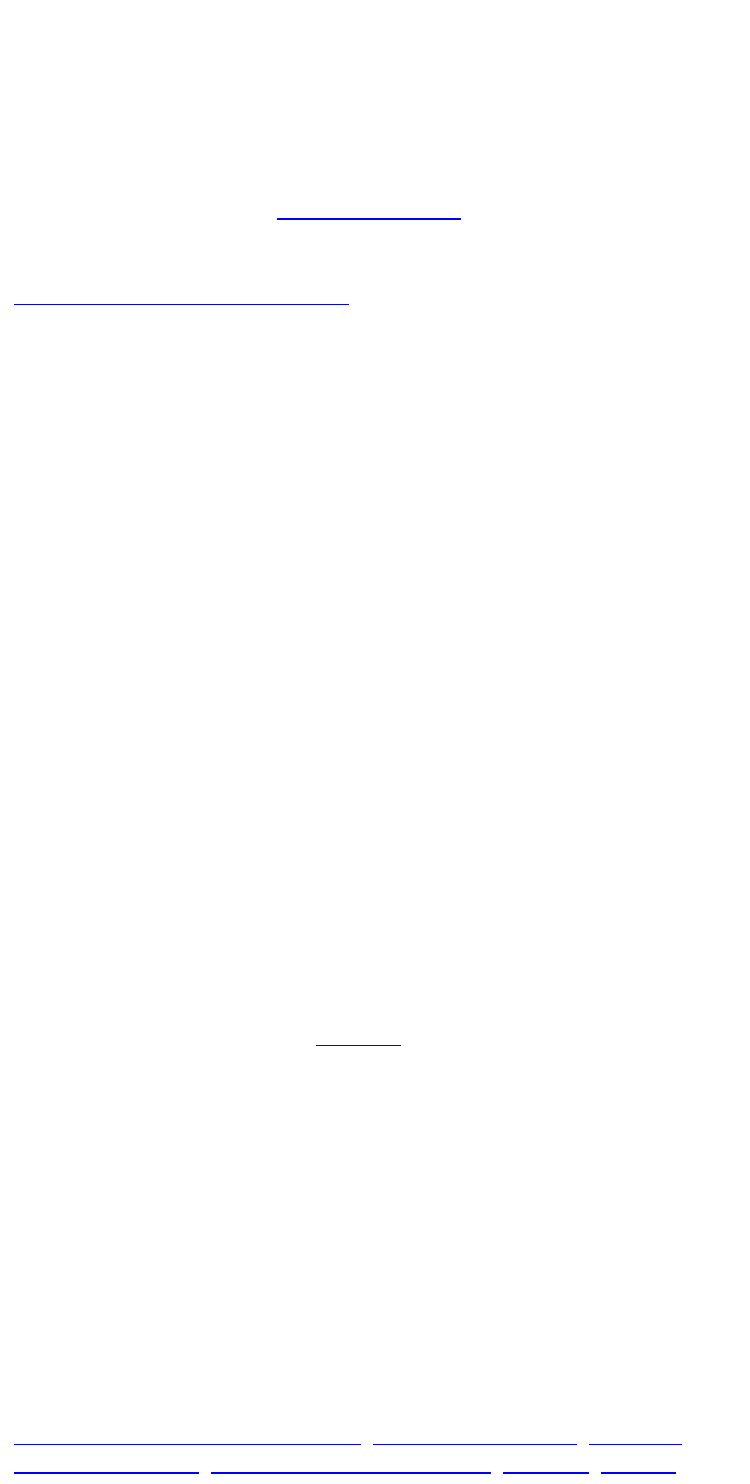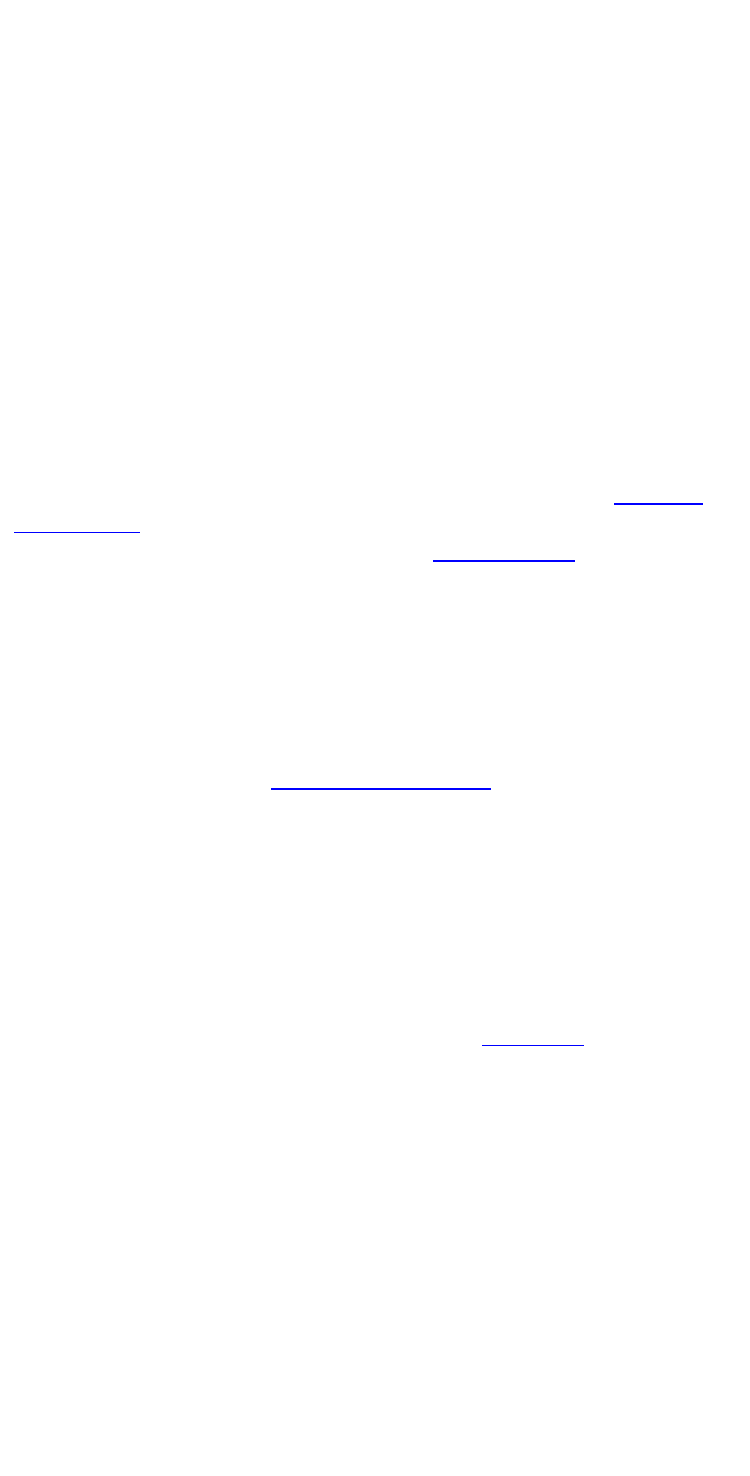Mona Baker & Gabriela Saldanha. Routledge Encyclopedia of Translation Studies (2nd edition)
Подождите немного. Документ загружается.


Page234
onesprogressivelymoreforeignizing(KoskinenandPaloposki2003:22).
Asecondaspectoftheretranslationhypothesispertainstotheissueofageing.
Bermansuggeststhatwhileoriginalsremainforever‘young’,translationswillage
withthepassageoftime,thusgivingrisetoaneedfornewtranslations(1990:1–
2).However,notalltranslationsareequallyaffectedbythepassageoftime,
andnotalltranslationswillnecessarily‘age’.Thosethatstandthetestoftime
andmatchtheenduranceoftheoriginalmaybethoughtofas‘great
translations’(ibid.:2),aviewthatisextensivelyproblematizedbyBrisset,who
invitesacriticaldiscussionof‘greatness’which,shesuggests,willinevitably
involvethedifficultquestionofliteraryvalue(2004:52–7).Theageingof
translationsandtheensuingneedforretranslationhavealsotraditionallybeen
associatedwithlanguagechangeandtheneedtoupdatethewordingand
terminologyusedinearliertranslations(Hanna2006:194).However,no
straightforwardlinkcanbeassumedtoexistbetweenthepassageoftimeand
theneedforretranslationsincetherearemanycasesofretranslationsofthe
samesourcetextsundertakenwithinashortspanoftime(SusamSarajeva
2003;Pym1998,2005b;Hanna2006;Jenn2006).Thedecisiontoretranslate
ortopublisharetranslation,then,cannotbereducedtoasinglefactorsuchas
theageingoftheinitialtranslation.
Thequestionofwhycertaintextsarerepeatedlytranslatedwhileothersare
translatedonlyoncehasbeenposedbyvariousscholars(Rodriguez1990:64;
Gambier1994:414;SusamSarajeva2003:5;PaloposkiandKoskinen
2004:29).Theanswerprobablyhasmoretodowiththecontextofthe
retranslationsthananyinherentcharacteristicofthesourcetextthatmakesit
‘eitherworthyorinneedofretranslation’(PaloposkiandKoskinen2004:29).
Motivesforretranslation
ChangingsocialcontextsandtheevolutionoftranslationNORMSareoften
citedasmajorfactorsinfluencingthechoicetoretranslatespecifictexts
(Brownlie2006:150).InastudyofretranslationsofCHILDREN’S
LITERATUREintoHebrew,DuNourexaminedretranslationsinordertotrace
the‘linguisticandtranslationalnorms’prevailingatdifferentperiods(1995:327).
Herstudydemonstratesclosecorrespondencebetweentheevolutionof
linguisticandstylisticnormsandthepublicationofnewretranslations:
‘readability’isshowntobeamajorconcerninlaterretranslations,whileearlier
translationsweremarkedbyalessreadable,biblelikestylewhichreflectedthe
prevailingnormfortranslationinthe1920s(ibid.:331).Kujamäki’sstudyof
GermantranslationsoftheFinnishnovelSeitsemänveljestäbyAleksisKivi
similarlyusesretranslationasdatatoexaminethehistoricaldynamicsofliterary
translation,andconcludesthatretranslationsarelargelygovernedby‘the
contextoftimeboundnormativeconditions’(2001:65),inparticularbyshiftsin
theideologicalcontextofreceptionandFinland’schangingimageinGermany.
Suchideologicalandpoliticalfactorshaveoftenmotivatednewretranslationsof
canonicalliterarytextsinparticular.Examplesincludecompetingretranslations
ofTomSawyerandHuckleberryFinnbyCommunistandproAmerican
publishersinpostwarFrance(Jenn2006:247–52);retranslationsbythe
Brazilianauthor,translatorandpublisherMonteiroLobato,whoinsertedhis
ownpoliticalviewsinhisretranslationsofchildren’sclassics(Milton2003);and
retranslationsandreeditionsofmanyadultandchildren’sclassicsduringthe
firstdecadeofthetwentyfirstcenturybyIslamistpublishersinTurkey(Aktaş
Salman2006;Boztepe2006).Apartfromretranslationsofliteraryclassics,less
canonicaltextsaresometimesretranslatedwithinanewideologicalcontextand
arethusrepositionedinthetargetculture.Venuti(2003:27)mentionsthecase
ofsomefeministretranslations(seeGENDERANDSEXUALITY)andargues
thatretranslationsmayalsobepublishedinordertoreaffirmtheauthorityof
certainsocialinstitutions,includingacademicorreligiousestablishments
(ibid.:26).
Thereareother,sometimessimplerexplanationsforretranslation.Forexample,
someretranslatorsmaynotbeawareofthepresenceofanearliertranslation
(Venuti2003:25);similarly,lackofcoordinationandcommunicationamong
publishersmayresultinthesimultaneouspublicationoftwodifferent
translations,inwhichcaseeachtranslationcanbe

Page235
considered‘initial’and‘retranslation’atthesametime.Theneedtoupdateor
modernizethelanguageofatranslation,thepublicationofarevisedor
expandedsourcetext,andthediscoveryofmistakesormisinterpretationsinthe
firsttranslationallserveaslegitimatejustificationsforretranslation.A
retranslationmayalsobecarriedoutwiththeaimofintroducinganew
interpretationofthesourcetext,sometimesaddressingadifferentreadershipor
creatinganewreadershipaltogether.Typicalexamplesofsuchattemptsat
reinterpretation/reorientationofpreviouslytranslatedworksincludeissuing
children’sversionsofadultclassicsandviceversa(Gambier1994;Jenn2006).
Insuchcases,retranslationsstandinaspecialintertextualrelationshipwitheach
other,aswellaswiththeirsourcetexts(Brownlie2006:153),andare
characterizedbymutabilityandbordercrossing(Jenn2006:236).Koskinen
andPaloposkirefertothe‘supplementary’natureofretranslation,which
enablestranslatorstotargetdifferentaudiencesorrecategorizesourcetexts
(2003:22).Thenotionofsupplementaritysuggeststhat‘textsandtheir
interpretationsfunctionsimultaenouslyonseverallayers,denyingeasy
classificationintoassimilativefirstandsourcetextorientednew
translations’(ibid.:23).Retranslationsmaybesupplementarynotonlyinterms
ofcomplementingorreorientingtheirsourcetexts,butalsointermsof
introducingnovelmaterialandideastothetargetculture.Toury(1999)suggests
thatretranslationssetouttoovercomeadeficiencyorfillagapinthetarget
systemandtobringinsomethingthatwasnottherebefore.Hearguesthat
retranslation,liketranslation,shouldbeconsideredanactofplanningbecauseit
alwaysinvolvesanelementofchange,howeverslight,onbehalfofthereceiving
culture.
Retranslatingcanonicalliteratureand/or‘recycling’existingtranslationsby
reprintingtheminanewformatcontinuestobefamiliarpracticeforpublishing
housesattractedbytheprestige,costeffectivenessandguaranteedsales
associatedwiththepublicationofliteraryclassics(Milton2001:62;Koskinen
andPalaposki2003:26;Venuti2003:30).Theseandothermotivationsprovide
thebroaderbackgroundagainstwhichretranslationsarecarriedoutand
published,oftenwithacertaindegreeoftensionandcompetitionwitheach
other.
Tensionandcompetition
Bycontrastwiththelinearprogressionmodelthatinformstheretranslation
hypothesisputforwardbyBermanandothers,laterresearchonretranslation
portraysitasafieldmarkedbyaconstantstrugglebetweenindividualsand
institutionsforthecontrolandproductionofnewinterpretations.Venuti
maintainsthatretranslationsundertakenwiththeawarenessofapreexisting
translation‘justifythemselvesbyestablishingtheirdifferencefromoneormore
previousversions’(2003:25).Thisdifferencecanbetracedintheretranslation
STRATEGIESthatinscribecompetinginterpretationsformedonthe
assumptionthatpreviousversionsarenolongeracceptable(ibid.:26).This
assumptionisusuallybasedonsocialorideologicalpremises,ratherthanan
evidentlinguisticorliterarylackintheprevioustranslations.Venutioffersthe
exampleofEnglishtranslationsofThomasMann’sworks,whichbecameasite
ofopenrivalrybetweenacademiaandcommercialpublishersin1995,with
eachpartydefendingacompetinginterpretationofMann’ssourcetexts
(2003:27).
Pymdrawsadistinctionbetweentwotypesofretranslations.‘Passive
retranslations’areseparatedbygeographicaldistanceortimeanddonothavea
bearingononeanother(1998:82),whereas‘activeretranslations’sharethe
sameculturalandtemporallocationandareindicativeof‘disagreementsover
translationstrategies’,challengingthevalidityofprevioustranslations(ibid.:82–
3).Anumberofcasestudieshaverevealedtheresistanceandtensionthatmark
activeretranslations.InherstudyoftheTurkishtranslationsofworksbyRoland
Barthes,SusamSarajeva(2003)arguesthatretranslationscarriedoutduring
thefifteenyearsbetween1975and1990werenotpromptedbylinguistic
changeortheageingofprevioustranslations;rather,theywereinitiatedby
translatorswhoweretryingtocreateanindigenousTurkishdiscourseonliterary
criticism.Shemaintainsthat‘retranslationsmayalsoemergeasaresultofa
synchronousstruggleinthereceivingsystemtocreatethetargetdiscourseinto
whichthesetranslationswillbeincorporated’(ibid.:5).Inthesamestudy,
SusamSarajevadrawsattentiontoanareaofretranslationthathasbeenlargely
ignored,namelythe‘nonexistence’

Page235
considered‘initial’and‘retranslation’atthesametime.Theneedtoupdateor
modernizethelanguageofatranslation,thepublicationofarevisedor
expandedsourcetext,andthediscoveryofmistakesormisinterpretationsinthe
firsttranslationallserveaslegitimatejustificationsforretranslation.A
retranslationmayalsobecarriedoutwiththeaimofintroducinganew
interpretationofthesourcetext,sometimesaddressingadifferentreadershipor
creatinganewreadershipaltogether.Typicalexamplesofsuchattemptsat
reinterpretation/reorientationofpreviouslytranslatedworksincludeissuing
children’sversionsofadultclassicsandviceversa(Gambier1994;Jenn2006).
Insuchcases,retranslationsstandinaspecialintertextualrelationshipwitheach
other,aswellaswiththeirsourcetexts(Brownlie2006:153),andare
characterizedbymutabilityandbordercrossing(Jenn2006:236).Koskinen
andPaloposkirefertothe‘supplementary’natureofretranslation,which
enablestranslatorstotargetdifferentaudiencesorrecategorizesourcetexts
(2003:22).Thenotionofsupplementaritysuggeststhat‘textsandtheir
interpretationsfunctionsimultaenouslyonseverallayers,denyingeasy
classificationintoassimilativefirstandsourcetextorientednew
translations’(ibid.:23).Retranslationsmaybesupplementarynotonlyinterms
ofcomplementingorreorientingtheirsourcetexts,butalsointermsof
introducingnovelmaterialandideastothetargetculture.Toury(1999)suggests
thatretranslationssetouttoovercomeadeficiencyorfillagapinthetarget
systemandtobringinsomethingthatwasnottherebefore.Hearguesthat
retranslation,liketranslation,shouldbeconsideredanactofplanningbecauseit
alwaysinvolvesanelementofchange,howeverslight,onbehalfofthereceiving
culture.
Retranslatingcanonicalliteratureand/or‘recycling’existingtranslationsby
reprintingtheminanewformatcontinuestobefamiliarpracticeforpublishing
housesattractedbytheprestige,costeffectivenessandguaranteedsales
associatedwiththepublicationofliteraryclassics(Milton2001:62;Koskinen
andPalaposki2003:26;Venuti2003:30).Theseandothermotivationsprovide
thebroaderbackgroundagainstwhichretranslationsarecarriedoutand
published,oftenwithacertaindegreeoftensionandcompetitionwitheach
other.
Tensionandcompetition
Bycontrastwiththelinearprogressionmodelthatinformstheretranslation
hypothesisputforwardbyBermanandothers,laterresearchonretranslation
portraysitasafieldmarkedbyaconstantstrugglebetweenindividualsand
institutionsforthecontrolandproductionofnewinterpretations.Venuti
maintainsthatretranslationsundertakenwiththeawarenessofapreexisting
translation‘justifythemselvesbyestablishingtheirdifferencefromoneormore
previousversions’(2003:25).Thisdifferencecanbetracedintheretranslation
STRATEGIESthatinscribecompetinginterpretationsformedonthe
assumptionthatpreviousversionsarenolongeracceptable(ibid.:26).This
assumptionisusuallybasedonsocialorideologicalpremises,ratherthanan
evidentlinguisticorliterarylackintheprevioustranslations.Venutioffersthe
exampleofEnglishtranslationsofThomasMann’sworks,whichbecameasite
ofopenrivalrybetweenacademiaandcommercialpublishersin1995,with
eachpartydefendingacompetinginterpretationofMann’ssourcetexts
(2003:27).
Pymdrawsadistinctionbetweentwotypesofretranslations.‘Passive
retranslations’areseparatedbygeographicaldistanceortimeanddonothavea
bearingononeanother(1998:82),whereas‘activeretranslations’sharethe
sameculturalandtemporallocationandareindicativeof‘disagreementsover
translationstrategies’,challengingthevalidityofprevioustranslations(ibid.:82–
3).Anumberofcasestudieshaverevealedtheresistanceandtensionthatmark
activeretranslations.InherstudyoftheTurkishtranslationsofworksbyRoland
Barthes,SusamSarajeva(2003)arguesthatretranslationscarriedoutduring
thefifteenyearsbetween1975and1990werenotpromptedbylinguistic
changeortheageingofprevioustranslations;rather,theywereinitiatedby
translatorswhoweretryingtocreateanindigenousTurkishdiscourseonliterary
criticism.Shemaintainsthat‘retranslationsmayalsoemergeasaresultofa
synchronousstruggleinthereceivingsystemtocreatethetargetdiscourseinto
whichthesetranslationswillbeincorporated’(ibid.:5).Inthesamestudy,
SusamSarajevadrawsattentiontoanareaofretranslationthathasbeenlargely
ignored,namelythe‘nonexistence’

Page236
ofretranslations(ibid.).Likenontranslations,worksthatareonlytranslated
oncecanrevealthemechanismsandconditionsofinclusionandexclusionof
foreignworksinagivenculture.
InhisstudyoftranslationsofSHAKESPEARE’SplaysinEgypt,Hanna(2006)
introducesanalternativeperspectiveonretranslationthatisalsocharacterized
byactivecompetition.DrawingonBourdieu’ssociology(see
SOCIOLOGICALAPPROACHES),Hannaarguesthatretranslatorsof
Shakespeare’stragediesintoArabicinthelatenineteenthandearlytwentieth
centurymadeuseofvariousformsof‘distinction’tosettheirtranslationsapart
fromearlierones,claiming,forexample,thattheyhadbetteraccesstothe
sourcetext,thesourcecultureortheauthor(ibid.:208).Asanotherformof
distinction(intheBourdieuseansense),someretranslatorstriedtodiscredit
previoustranslationsbypointingoutvariousdeficienciesinthem(ibid.:223).
Otherssoughtdistinctionbyclaimingthattheirtranslationsservedafunctionin
thetargetculturethathadnotbeenservedbyearliertranslations(ibid.:227).In
drawingattentiontotheactivestruggleinwhichretranslatorsoftenengageas
theyattempttolegitimizeanddistinguishtheirtranslationsfromearlierones,both
Hanna’sandSusamSarajeva’sstudiesforegroundtheretranslator’sagency,an
elementthatisnotgivenmuchattentioninstudiesinformedbynormtheory.
Althoughretranslations,likefirsttranslations,cannotbestudiedoutsidetheir
historicalcontext,relyingonastrictlysocialcausationalmodeltoexplainthem
runstheriskofoverlookingthehumanelementinvolvedintheprocess.Brisset
thusdrawsattentiontotheimportanceofstudyingretranslationsnotonlyfroma
diachronicbutalsoasynchronicperspective,suggestingthatthiswouldreveal
thosefactorsthatdistinguishtheworkofdifferent‘translatingsubjects’and
highlightthecognitiveandcreativeaspectsoftranslation(2004:64).Venuti
similarlyforegroundstheroleoftheindividualretranslatorandarguesthat
‘retranslationstypicallyhighlightthetranslator’sintentionalitybecausetheyare
designedtomakeanappreciabledifference’(2003:29).Hedrawsattentionto
thefactthatsomeretranslationsmayoriginatepurelyfromatranslator’s
personalappreciationofatext(ibid.:30).Retranslatorsmayalsosetoutto
displacetheprevailingtranslationNORMSinagivenculture(ibid.:29).Inthe
nineteenthcentury,somesinologiststriedtodefinethenormsoftranslationfrom
Chinesebyopenlycriticizingearliertranslations(StAndré2003a:68);StAndré
offerstheexampleofSirJohnFrancisDavis,whosedesiretoestablishhimself
asanauthorityonChineseculturemotivatedhisretranslationofHaoquizhuan
in1829(ibid.:64).Nevertheless,individualchoicesarenaturallyembeddedina
largersocialcontext,andasVenutinotes,‘transindividualfactorsinevitably
enterintotranslationprojects’(2003:30).Theinteractionbetweentheindividual
translatorandthelargercontextinwhichretranslationsareproducedremindsus
thatretranslationisafunctionofthedynamicsofthetargetcontext,ratherthana
responsetoanyinherentpropertiesofthesourcetext.
Seealso:
BIBLE,JEWISHANDCHRISTIAN;CLASSICALTEXTS;GENDER
ANDSEXUALITY;LITERARYTRANSLATION;NORMS;RELAY.
Furtherreading
Berman1990;Gambier1994;MiltonandTorres2003;SusamSarajeva2003;
Venuti2003;Brisset2004;Brownlie2006.
ŞEHNAZTAHIRGÜRÇAĞLAR
Reviewingandcriticism
Reviewingandcriticismaredistinctbutrelatedevaluativepracticesconcerned
withliteratureinthebroadestsense,ofnotonlyimaginativewritingbutalsonon
fiction.Thedifferencescitedconventionallybetweenthemalsoholdtruefor
literatureintranslation:therevieweralertsareadertonewbooks,describing
themandpassingjudgementastowhethertheyareworthreadingandbuying;
thecriticaddressesbooksthatmayormaynotbenew,consideringthemin
detailandusuallyassumingareader’sfamiliaritywiththem(Berman1986,
1995;Oates1990;Ozick2007;LeonardWoolf1939:29;VirginiaWoolf
1939:7).Neitherthereviewingnorthecriticismofliterarytranslationshas

Page236
ofretranslations(ibid.).Likenontranslations,worksthatareonlytranslated
oncecanrevealthemechanismsandconditionsofinclusionandexclusionof
foreignworksinagivenculture.
InhisstudyoftranslationsofSHAKESPEARE’SplaysinEgypt,Hanna(2006)
introducesanalternativeperspectiveonretranslationthatisalsocharacterized
byactivecompetition.DrawingonBourdieu’ssociology(see
SOCIOLOGICALAPPROACHES),Hannaarguesthatretranslatorsof
Shakespeare’stragediesintoArabicinthelatenineteenthandearlytwentieth
centurymadeuseofvariousformsof‘distinction’tosettheirtranslationsapart
fromearlierones,claiming,forexample,thattheyhadbetteraccesstothe
sourcetext,thesourcecultureortheauthor(ibid.:208).Asanotherformof
distinction(intheBourdieuseansense),someretranslatorstriedtodiscredit
previoustranslationsbypointingoutvariousdeficienciesinthem(ibid.:223).
Otherssoughtdistinctionbyclaimingthattheirtranslationsservedafunctionin
thetargetculturethathadnotbeenservedbyearliertranslations(ibid.:227).In
drawingattentiontotheactivestruggleinwhichretranslatorsoftenengageas
theyattempttolegitimizeanddistinguishtheirtranslationsfromearlierones,both
Hanna’sandSusamSarajeva’sstudiesforegroundtheretranslator’sagency,an
elementthatisnotgivenmuchattentioninstudiesinformedbynormtheory.
Althoughretranslations,likefirsttranslations,cannotbestudiedoutsidetheir
historicalcontext,relyingonastrictlysocialcausationalmodeltoexplainthem
runstheriskofoverlookingthehumanelementinvolvedintheprocess.Brisset
thusdrawsattentiontotheimportanceofstudyingretranslationsnotonlyfroma
diachronicbutalsoasynchronicperspective,suggestingthatthiswouldreveal
thosefactorsthatdistinguishtheworkofdifferent‘translatingsubjects’and
highlightthecognitiveandcreativeaspectsoftranslation(2004:64).Venuti
similarlyforegroundstheroleoftheindividualretranslatorandarguesthat
‘retranslationstypicallyhighlightthetranslator’sintentionalitybecausetheyare
designedtomakeanappreciabledifference’(2003:29).Hedrawsattentionto
thefactthatsomeretranslationsmayoriginatepurelyfromatranslator’s
personalappreciationofatext(ibid.:30).Retranslatorsmayalsosetoutto
displacetheprevailingtranslationNORMSinagivenculture(ibid.:29).Inthe
nineteenthcentury,somesinologiststriedtodefinethenormsoftranslationfrom
Chinesebyopenlycriticizingearliertranslations(StAndré2003a:68);StAndré
offerstheexampleofSirJohnFrancisDavis,whosedesiretoestablishhimself
asanauthorityonChineseculturemotivatedhisretranslationofHaoquizhuan
in1829(ibid.:64).Nevertheless,individualchoicesarenaturallyembeddedina
largersocialcontext,andasVenutinotes,‘transindividualfactorsinevitably
enterintotranslationprojects’(2003:30).Theinteractionbetweentheindividual
translatorandthelargercontextinwhichretranslationsareproducedremindsus
thatretranslationisafunctionofthedynamicsofthetargetcontext,ratherthana
responsetoanyinherentpropertiesofthesourcetext.
Seealso:
BIBLE,JEWISHANDCHRISTIAN;CLASSICALTEXTS;GENDER
ANDSEXUALITY;LITERARYTRANSLATION;NORMS;RELAY.
Furtherreading
Berman1990;Gambier1994;MiltonandTorres2003;SusamSarajeva2003;
Venuti2003;Brisset2004;Brownlie2006.
ŞEHNAZTAHIRGÜRÇAĞLAR
Reviewingandcriticism
Reviewingandcriticismaredistinctbutrelatedevaluativepracticesconcerned
withliteratureinthebroadestsense,ofnotonlyimaginativewritingbutalsonon
fiction.Thedifferencescitedconventionallybetweenthemalsoholdtruefor
literatureintranslation:therevieweralertsareadertonewbooks,describing
themandpassingjudgementastowhethertheyareworthreadingandbuying;
thecriticaddressesbooksthatmayormaynotbenew,consideringthemin
detailandusuallyassumingareader’sfamiliaritywiththem(Berman1986,
1995;Oates1990;Ozick2007;LeonardWoolf1939:29;VirginiaWoolf
1939:7).Neitherthereviewingnorthecriticismofliterarytranslationshas

Page237
developedfullyasatradition,however–unlikethereviewingandcriticismof
literature.Thiscanbeexplainedonlyinpartbythemultipledifficultiesinherentin
establishingappropriatecriteriaforanalysingandpassingjudgementoncreative
activity.Thegenerallackofvalue–or‘literarycapital’(Casanova
1999/2004:16)–associatedwithtranslationintheWesthasbeenanadditional
factor,possiblyanequallydeterminantone(Bassnett1980:10;Santoyo
1985:28–36;Holmes1988:78;Vilikovský1988:72).AsLeighton(1991:xi–xix
andff.)hasindicated,translationcriticismflourishesinanationalcultural
conditionwheretranslationishighlyesteemed.
Despitethechallengesthatevaluationpresents,translatorsandtranslation
scholarsalikeincreasinglyrecognizeitsimportance.Asa‘specialkindofcritical
activity’(Vilikovský1988:74),itmustbedistinguishedfromtheformsof
criticismimplicitintheactivityoftranslationitself(vandenBroeck1985:61;
Lefevere1987;diStefano1982;Berman1986,1984/1992:7,41).Atleast
onescholarhassuggestedthattranslationcriticismbeconsideredaseparate
areaofappliedtranslationstudies(Holmes1988:78).Othershavestressedits
importanceasa‘link’betweentranslationtheoryandpractice(Newmark
1988:184)anda‘weaponindefenceoftheprofession’(Dodds1992:4).For
Berman,criticism,whenperformedasrigorousanalysisorcritique,offersthe
possibilityofreleasingatranslation’s‘truth’(1995:13–14).Translatorsand
reviewersofliterarytranslationhavealsoindicatedaneedforevaluationsthat
discussatranslationwithmorethanasingleadjectiveandrefrainfromtrashinga
translator’sworkonthebasisofisolatederrors(Douma1972;Christ1982;
Maier1990–91;Hearne1991;PENAmericanCenter2004).Inthecaseof
bothreviewingandcriticism,aninterestinandconcernforevaluationisleading
tothestudyofpastevaluativepractices,discussionsaboutthecriteria
appropriatefortheevaluationoftranslations,andthescrutinyofcurrenttrends
inreviewingandcriticism.
Thestudyofpastevaluativepracticespresentsaparticularsetofchallenges.
Theabsenceofa‘universalcanonaccordingtowhichtextsmaybe
assessed’(Bassnett1980:9)andthechangesthatoccurcontinuallyinthe
criteriausedtomeasurethesuccessorvalueoftranslationsmakeitdifficultto
identifyfixedpatternsandtrends.JohnDrydenmayhavespokenconfidently
about‘good’and‘bad’likenesses(1680),butthedistinctionbetweenthemhas
alwaysdependedon‘ethnocentricapproachestothetaskofcriticism’(Kelly
1979:47).Perhapsevenmoreimportantly,manyoftheevaluationsthathave
provedmostinfluentialare,liketranslationitself,notimmediatelyvisible.Forthe
unwrittenhistoryoftranslationreviewingandcriticismisnotonlycharacterized
bytheunacknowledged,covert,implicitandverbalactsofevaluationthatoccur
inallevaluativepractices(Smith1987/1990:18–82),buteventhe‘highly
specializedinstitutionalizedformsofevaluation’(ibid.:182)frequently
containvaluejudgementsmadewithoutreferencetoexplicitcriteria.Inaddition,
suchjudgementshaveoftenappeared,andcontinuetoappear,informsnot
specificallyidentifiedasevaluative,suchastranslators’prefacesand
annotations,complimentarypoemsandessaysabouttheworkofother
translators,scholarlywritingabouttranslationtheoryandpractice,and
appraisalsembeddedinfictionalcommentary.
Translators’prefacesandannotationsoftenprovideinsightfulobservations
abouttranslationpractice.RETRANSLATIONS,however,arefrequently
undertakenwiththeintentofimprovingorevenrectifyingexistingversions,and
theevaluativecommentstheycontainmustthemselvesbeevaluatedinthelight
oftheirpossibleroleinatranslator’sownproject(Vanderschelden2000b).
Thesameistrueofwritingbytranslatorsabouttheworkofothertranslators.
Suchcommentaryisoftenbothhighlymetaphoricalandhighlymotivatedwith
respecttoatranslator’seffortortotheprofessionoftranslationitself.This
meansthatcommentarymustbereadinthecontextofprevailingrhetorical
conventions,andthismakesthetaskofextractinggeneralprinciplesof
evaluationtreacherousifnotimpossible.Thecomplimentsfoundinsuch
RenaissancepoemsasConstantijnHuygens’sversesontranslationsbyJacob
WesterbaenorthosebyJamesWrightonDryden’stranslationswereinfacta
deliberatestrategytoimprovethesubordinatepositionoftranslations(Hermans
1985b:117).Commentaryalsoprovidestranslatorswithavehiclefor
enhancingthestatusoftheirworkbyemphasizingthechallengesitpresentsor
by

Page237
developedfullyasatradition,however–unlikethereviewingandcriticismof
literature.Thiscanbeexplainedonlyinpartbythemultipledifficultiesinherentin
establishingappropriatecriteriaforanalysingandpassingjudgementoncreative
activity.Thegenerallackofvalue–or‘literarycapital’(Casanova
1999/2004:16)–associatedwithtranslationintheWesthasbeenanadditional
factor,possiblyanequallydeterminantone(Bassnett1980:10;Santoyo
1985:28–36;Holmes1988:78;Vilikovský1988:72).AsLeighton(1991:xi–xix
andff.)hasindicated,translationcriticismflourishesinanationalcultural
conditionwheretranslationishighlyesteemed.
Despitethechallengesthatevaluationpresents,translatorsandtranslation
scholarsalikeincreasinglyrecognizeitsimportance.Asa‘specialkindofcritical
activity’(Vilikovský1988:74),itmustbedistinguishedfromtheformsof
criticismimplicitintheactivityoftranslationitself(vandenBroeck1985:61;
Lefevere1987;diStefano1982;Berman1986,1984/1992:7,41).Atleast
onescholarhassuggestedthattranslationcriticismbeconsideredaseparate
areaofappliedtranslationstudies(Holmes1988:78).Othershavestressedits
importanceasa‘link’betweentranslationtheoryandpractice(Newmark
1988:184)anda‘weaponindefenceoftheprofession’(Dodds1992:4).For
Berman,criticism,whenperformedasrigorousanalysisorcritique,offersthe
possibilityofreleasingatranslation’s‘truth’(1995:13–14).Translatorsand
reviewersofliterarytranslationhavealsoindicatedaneedforevaluationsthat
discussatranslationwithmorethanasingleadjectiveandrefrainfromtrashinga
translator’sworkonthebasisofisolatederrors(Douma1972;Christ1982;
Maier1990–91;Hearne1991;PENAmericanCenter2004).Inthecaseof
bothreviewingandcriticism,aninterestinandconcernforevaluationisleading
tothestudyofpastevaluativepractices,discussionsaboutthecriteria
appropriatefortheevaluationoftranslations,andthescrutinyofcurrenttrends
inreviewingandcriticism.
Thestudyofpastevaluativepracticespresentsaparticularsetofchallenges.
Theabsenceofa‘universalcanonaccordingtowhichtextsmaybe
assessed’(Bassnett1980:9)andthechangesthatoccurcontinuallyinthe
criteriausedtomeasurethesuccessorvalueoftranslationsmakeitdifficultto
identifyfixedpatternsandtrends.JohnDrydenmayhavespokenconfidently
about‘good’and‘bad’likenesses(1680),butthedistinctionbetweenthemhas
alwaysdependedon‘ethnocentricapproachestothetaskofcriticism’(Kelly
1979:47).Perhapsevenmoreimportantly,manyoftheevaluationsthathave
provedmostinfluentialare,liketranslationitself,notimmediatelyvisible.Forthe
unwrittenhistoryoftranslationreviewingandcriticismisnotonlycharacterized
bytheunacknowledged,covert,implicitandverbalactsofevaluationthatoccur
inallevaluativepractices(Smith1987/1990:18–82),buteventhe‘highly
specializedinstitutionalizedformsofevaluation’(ibid.:182)frequently
containvaluejudgementsmadewithoutreferencetoexplicitcriteria.Inaddition,
suchjudgementshaveoftenappeared,andcontinuetoappear,informsnot
specificallyidentifiedasevaluative,suchastranslators’prefacesand
annotations,complimentarypoemsandessaysabouttheworkofother
translators,scholarlywritingabouttranslationtheoryandpractice,and
appraisalsembeddedinfictionalcommentary.
Translators’prefacesandannotationsoftenprovideinsightfulobservations
abouttranslationpractice.RETRANSLATIONS,however,arefrequently
undertakenwiththeintentofimprovingorevenrectifyingexistingversions,and
theevaluativecommentstheycontainmustthemselvesbeevaluatedinthelight
oftheirpossibleroleinatranslator’sownproject(Vanderschelden2000b).
Thesameistrueofwritingbytranslatorsabouttheworkofothertranslators.
Suchcommentaryisoftenbothhighlymetaphoricalandhighlymotivatedwith
respecttoatranslator’seffortortotheprofessionoftranslationitself.This
meansthatcommentarymustbereadinthecontextofprevailingrhetorical
conventions,andthismakesthetaskofextractinggeneralprinciplesof
evaluationtreacherousifnotimpossible.Thecomplimentsfoundinsuch
RenaissancepoemsasConstantijnHuygens’sversesontranslationsbyJacob
WesterbaenorthosebyJamesWrightonDryden’stranslationswereinfacta
deliberatestrategytoimprovethesubordinatepositionoftranslations(Hermans
1985b:117).Commentaryalsoprovidestranslatorswithavehiclefor
enhancingthestatusoftheirworkbyemphasizingthechallengesitpresentsor
by

Page238
assertingthesuperiorityoftheirownversions(Raffel1992).Evaluationsthat
proveinfluentialareevenfoundinworksoffiction,forexample,thecomments
abouttranslationandtranslatorsthatCervantesincludedinDonQuijote
(Moner1990:519–22).
Byexaminingthejudgementsofcriticsandreviewersfromthepast,current
translationscholarshavebeguntodocumenttheoftencomplexcontextsin
whichevaluationoccurs.Thisworkbringstolightboththemotivationof
individualcriticsandthefactthattheirassessmentswereoftenbasedon
informationapparentlyunrelatedtotheactivityoftranslation.Williams
(1993:187,75)hasarguedthatAlexanderPope’scriticsjudgedhimasa
translatorofHomerintermsofhis‘poeticvirility’,usingevidence‘only
tangentiallyrelevanttotheirobservations’.InhisstudyofMatthewArnold’s
‘OnTranslatingHomer’,Venuti(1995:118–45)hasshownnotonlythat
Arnold’sattackonFrancisNewman’stranslationoftheIliad(seeBRITISH
TRADITION)servedtomarginalizeNewman’swork,butalsotheextentto
whichapolemicsaboutacceptabletranslationSTRATEGIEScanbe
simultaneouslyaboutculturalpolitics.May’sdiscussionaboutConstance
GarnettrevealsthatthelonglivedpopularityofGarnett’smanytranslations
fromtheRussiandidnotresultfromcriticalacclaimofherwork.Rather,itwas
duetoGarnett’sabilitytomakeRussianworksreadabletotheEnglishlanguage
publicandtotheunquestioningacceptanceonthepartofcriticsandreaders
alikeonceherreputationwasestablished(May1994:30–42).
FromAlexanderTytler(seeBRITISHTRADITION)toGeorgeSteinerand
otherswritingmorerecently,criticshavedescribedtranslationsas‘good’or
‘bad’withoutseriouslyquestioningorqualifyingthoseadjectives(Tytler
1813:13–14;Steiner1975:396).Atthesametime,however,thoughtfulefforts
tobringincreasedattentiontobearonevaluationandestablishsystematic
evaluativecriteriadoexist.Theerroridentificationandhighlysubjective
appraisalsthatcharacterizemuchtranslationcriticismhavenodoubtbeen
largelyresponsibleforbothcriticswhoargueexclusivelyforlinguisticsbased
evaluationsandthosewhoadoptmoreeclecticapproachesforevaluations
groundedonthoroughanalysisanddescription(seeQUALITY).Somecritics
upholdthedesirabilityofvaluejudgementsandquestionthepossibilityof‘pure
description’(Dodds1992:3),butthosewhotendtoeschewvaluejudgements,
preferringnottoproclaimonetranslationbetterthananother,aremore
numerous(HatimandMason1990b:1).Concernedlesswithtraditional
conceptsofqualitythanwithunderstandingthewaytranslatedtextswork(van
denBroeck1985:58–60),theyspeakinsteadofdefiningatranslator’smethods
(Vilikovský1988:75)andpurpose(Newmark1988:186);thesearetobe
discussedwithrespecttoagiventranslationand,insomeinstances,alsotoa
critic’sown,individualpurpose(Newmark1988:186–9).
Themajorityofcriticsexpectthatbothdescriptionandcriticismwillinvolve
originalsaswellastranslatedtexts,evenwhentheyadvocatevaryingdegreesof
comparison,seektoanswerdifferentquestions,ordocumentthepossibilityof
morethanonecompetenttranslation(Nida1982).Vilikovský’smodel,for
example,isbasedonanunderstandingoftranslationcriticismas‘aninstrument
fordescribingtheobservationalfactsofinterliterarycontact’(1988:74).This
modelconsistsofthreeprincipalrelationships;oneislimitedtothe‘literary
context’ofthetranslation,buttheothertworelationships–betweenthe
‘originalandthemetatext’andbetween‘thetwoliterarycontexts’–involve
boththeoriginalandthetranslation.Adescriptionofthetranslator’smethods
andadiscussionofthetranslation’s‘degreeofadequacy’and‘levelof
equivalence’pertaintothefirstrelationship(ibid.:74,77,75).Newmark’sfive
partmodelalsoincludestheanalysisofthesourcelanguagetext,acomparison
ofitandthetranslation,andcommentsaboutthetranslation’spotentialroleasa
translation;thecomparativestudyisthe‘heart’ofthismodel(1988:188).
Dodds(1985:191)describesthetranslationcriticasa‘textanalyst’whose
threefoldanalysismustencompassthelanguageofthesourcetext,thatofthe
targettextandacomparisonbetweenthetwo.HatimandMason(1990b:10)
outlineasetofcomparativeparametersthatcanbeusedtoanalyseand
comparetranslations.Theirprincipalinterestliesinthe‘culturalsemioticsof
language’;theyfocusnotonindividualwordsbutona‘threadofdiscourse
whichissustainedthroughacommunicativetransaction’.
OthercomparativemodelsincludedeBeaugrande’sdiscussionoftranslating
POETRY,

Page238
assertingthesuperiorityoftheirownversions(Raffel1992).Evaluationsthat
proveinfluentialareevenfoundinworksoffiction,forexample,thecomments
abouttranslationandtranslatorsthatCervantesincludedinDonQuijote
(Moner1990:519–22).
Byexaminingthejudgementsofcriticsandreviewersfromthepast,current
translationscholarshavebeguntodocumenttheoftencomplexcontextsin
whichevaluationoccurs.Thisworkbringstolightboththemotivationof
individualcriticsandthefactthattheirassessmentswereoftenbasedon
informationapparentlyunrelatedtotheactivityoftranslation.Williams
(1993:187,75)hasarguedthatAlexanderPope’scriticsjudgedhimasa
translatorofHomerintermsofhis‘poeticvirility’,usingevidence‘only
tangentiallyrelevanttotheirobservations’.InhisstudyofMatthewArnold’s
‘OnTranslatingHomer’,Venuti(1995:118–45)hasshownnotonlythat
Arnold’sattackonFrancisNewman’stranslationoftheIliad(seeBRITISH
TRADITION)servedtomarginalizeNewman’swork,butalsotheextentto
whichapolemicsaboutacceptabletranslationSTRATEGIEScanbe
simultaneouslyaboutculturalpolitics.May’sdiscussionaboutConstance
GarnettrevealsthatthelonglivedpopularityofGarnett’smanytranslations
fromtheRussiandidnotresultfromcriticalacclaimofherwork.Rather,itwas
duetoGarnett’sabilitytomakeRussianworksreadabletotheEnglishlanguage
publicandtotheunquestioningacceptanceonthepartofcriticsandreaders
alikeonceherreputationwasestablished(May1994:30–42).
FromAlexanderTytler(seeBRITISHTRADITION)toGeorgeSteinerand
otherswritingmorerecently,criticshavedescribedtranslationsas‘good’or
‘bad’withoutseriouslyquestioningorqualifyingthoseadjectives(Tytler
1813:13–14;Steiner1975:396).Atthesametime,however,thoughtfulefforts
tobringincreasedattentiontobearonevaluationandestablishsystematic
evaluativecriteriadoexist.Theerroridentificationandhighlysubjective
appraisalsthatcharacterizemuchtranslationcriticismhavenodoubtbeen
largelyresponsibleforbothcriticswhoargueexclusivelyforlinguisticsbased
evaluationsandthosewhoadoptmoreeclecticapproachesforevaluations
groundedonthoroughanalysisanddescription(seeQUALITY).Somecritics
upholdthedesirabilityofvaluejudgementsandquestionthepossibilityof‘pure
description’(Dodds1992:3),butthosewhotendtoeschewvaluejudgements,
preferringnottoproclaimonetranslationbetterthananother,aremore
numerous(HatimandMason1990b:1).Concernedlesswithtraditional
conceptsofqualitythanwithunderstandingthewaytranslatedtextswork(van
denBroeck1985:58–60),theyspeakinsteadofdefiningatranslator’smethods
(Vilikovský1988:75)andpurpose(Newmark1988:186);thesearetobe
discussedwithrespecttoagiventranslationand,insomeinstances,alsotoa
critic’sown,individualpurpose(Newmark1988:186–9).
Themajorityofcriticsexpectthatbothdescriptionandcriticismwillinvolve
originalsaswellastranslatedtexts,evenwhentheyadvocatevaryingdegreesof
comparison,seektoanswerdifferentquestions,ordocumentthepossibilityof
morethanonecompetenttranslation(Nida1982).Vilikovský’smodel,for
example,isbasedonanunderstandingoftranslationcriticismas‘aninstrument
fordescribingtheobservationalfactsofinterliterarycontact’(1988:74).This
modelconsistsofthreeprincipalrelationships;oneislimitedtothe‘literary
context’ofthetranslation,buttheothertworelationships–betweenthe
‘originalandthemetatext’andbetween‘thetwoliterarycontexts’–involve
boththeoriginalandthetranslation.Adescriptionofthetranslator’smethods
andadiscussionofthetranslation’s‘degreeofadequacy’and‘levelof
equivalence’pertaintothefirstrelationship(ibid.:74,77,75).Newmark’sfive
partmodelalsoincludestheanalysisofthesourcelanguagetext,acomparison
ofitandthetranslation,andcommentsaboutthetranslation’spotentialroleasa
translation;thecomparativestudyisthe‘heart’ofthismodel(1988:188).
Dodds(1985:191)describesthetranslationcriticasa‘textanalyst’whose
threefoldanalysismustencompassthelanguageofthesourcetext,thatofthe
targettextandacomparisonbetweenthetwo.HatimandMason(1990b:10)
outlineasetofcomparativeparametersthatcanbeusedtoanalyseand
comparetranslations.Theirprincipalinterestliesinthe‘culturalsemioticsof
language’;theyfocusnotonindividualwordsbutona‘threadofdiscourse
whichissustainedthroughacommunicativetransaction’.
OthercomparativemodelsincludedeBeaugrande’sdiscussionoftranslating
POETRY,

Page239
inwhichthecriticisurgedtoestablishcriteriaforevaluationthataddressthe
‘presuppositionsandexpectationsabouttexts’sharedbyreadersandwritersin
eachlanguage(1978:122).VandenBroeck(1985:56)positsasthestarting
pointofhisdescription‘acomparativeanalysisofthesourceandtargettexts’
thatincludesboth‘textstructures’and‘systemsoftexts’.Wilss(1982:220)
arguesforaprincipallyempirical,linguisticapproachthatrestsonacomparison
ofsourceandtargetlanguagetexts,andSimpson(1975:255)similarly
recommendsalinguisticapproachthatisprimarilycomparative;Kirkov
(1988:231)suggestsmorecomprehensive‘aestheticlinguisticcriteria’butstill
considersbothtranslationandoriginal.Thesevenfeaturesoftextuality
proposedbyNeubertandShreve(1992)alsoprovideaframeworkthatcould
beusedforcomparativeanalysisandevaluation,asdoSnellHornby’sanalyses
(1988).
Comparativemodels,however,donotrepresenttheonlyapproachto
translationcriticism,despiteaninsistenceonthepartofsomescholarsthat
translationcriticismmustnotbeperformedwithouttakingtheoriginalinto
account(Vilikovský1988:75;deBeaugrande1978:121).Norarethecritics
whostudyonlythetranslatedtextanditscontextnecessarilythereviewersand
editorswhooverlookthefactoftranslationentirely.Onthecontrary,Lefevere
(1981:55,59)hasexplainedthePOLYSYSTEMhypothesisanditsfocuson
theproductoftranslationinthecontextofthetargetcultureratherthanonthe
translationprocess.Toury’sworkwithtranslationalNORMSalsosuggests
evaluativecriteriacentredonthetargetsystemalone(1978,1980b).Although
Touryarguesthatcomparativestudymighthavesomeroleintranslation
criticism,henotesthatcomparisonsbetweentranslationsandoriginalsoften
leadtoanenumerationoferrorsandareverencefortheoriginal(1978:26).His
commentsareechoed,albeitindifferentframeworks,byJorgeLuisBorgesand
TomConley.Borgespointstothecripplingeffectthatbilingualeditionscan
haveonareader’sabilitytoread,andimplicitly,toevaluateatranslation
(Alifano1984:51),andConley(1986:48)statesthat‘criticsfabricate
“something[tobe]lostintranslation”attheveryinstanttheyplacetheireyes
betweentwoversionsofacanonicaltext’.Bermanelaboratedandarguedfora
‘productivecritique’inwhichthe‘confrontation’ofatranslationandtheoriginal
isadecisive,butnotthesolecomponentofanethicalandaestheticevaluation
thatconsidersatranslationinrelationtoitsownlanguageandliterarytradition
(1995:83–96)andtotheexperienceoftheforeignitmakespossibleinthem
(1999:74–5).
Recentworkinliterarycriticismandtheory,linguistics,anthropology,
philosophyandculturalstudieshasdirect,albeitattimescontradictory
implicationsfortheevaluationofliterarytranslations.Ontheonehand,notonly
the‘deconstructionists’entireproject’(Gentzler1993/2001:146;see
DECONSTRUCTION)butalsotheentirerangeofchallengespresentedby
poststructuralismtoprevailingdefinitionsoftextualauthorityandintegrityhave
renderedobsoleteconventionalevaluativeterms,puttinginquestioneventhe
notionof‘between’inthecontextoftranslation(Tymoczko2003).Onthe
otherhand,theworkofpostcolonialscholarshasdocumentedtheextentto
whichtranslationscango‘wrong’,even‘respectfully’(Spivak1992b:183)
wheninequalitiesandpowerrelationshipsbetweenculturesarenotunderstood
andacknowledgedappropriately(seePOSTCOLONIALAPPROACHES).
Inbothinstancesthepracticeoftranslationbecomesnewlyvisibleandtherole
ofthetranslatorisscrutinized;inbothinstancesvaluejudgementsaremade
accordingtonewandshiftingcriteria.
Despitetheunquestionablefreedomthattheradicaldecentringassociatedwith
postructuralismofferstranslators,theveryrequirementofdecentringitself
carriesasetofexpectationsandimplicitevaluativecriteria.Forifpost
structuralismgrantedanewagencytotranslators(Venuti1992:11),italso
imposedonthemanincreasedburdenofresponsibility.Intheabsenceof
universaldefinitions,translatorshavebeencalledontomakeexplicitthe
strategiesandgoalsthatgoverntheirpractice(see,forexample,Arrojo1998).
Theyarealsoencouragedtowriteprefaces,afterwords,andotherformsof
commentary.Especiallyinthecaseofinnovative,transgressivetexts,theyare
expectedtotranslatetransgressively,andtheirworkhasbeenmeasuredagainst
criteriasuchas‘abusive’(Lewis1985:56)or‘destructive’(Conley1986:49)
fidelity.Inthismeasurement,wordslikeaccurateandincorrectarenot
relevant.Instead,failureisassociatedwithan
